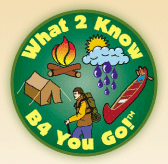The weather was cold and rainy, but it didn’t dampen the spirits of the 17 students who turned out to learn about Clear Print Identification and Gaits at a private event in Aurora, Illinois.
Before class began the students had a chance to view all manner of animal sign and aids that were on display indoors. From feathers & fur to field guides & footprints–plaster casts of fox and coyote, wolf and bear. There was even a tracking box (a 2′ x 5′ sand box) set up outdoors that captured the ramblings of a raccoon who had wandered through the night before.
The students learned how to identify a clear print by counting toes, looking for claw marks, and categorizing the overall shape of the track. Everyone was encouraged to classify the shape according to her or his own definition; the hope being that by personally naming the shape each student would then remember her/his personal descriptor for each family of animals. The obvious “heart-shaped”, “round”, and “oval” descriptions were expanded with creative suggestions such as “ice cream cone”, “sunrise”, and more.
The second half of the class focused on gaits, the way in which animals walk. With a perfect demonstration by young Cooper the class was able to visualize the diagonal gait of the “Quiet Walkers”. They move opposite front and hind feet at the same time, i.e. left front & right hind, then right front & left hind. Becca was then called upon to show us that humans walk in the same way, pretending of course that her arms were her front legs. We next studied the “Tough Guys of the Woods”, those animals who face few if any threats from other critters. Mike helped Ron demonstrate how humans at times use the tough-guy gait to impose a feeling of threat or dread in an opponent.
The class then learned that most of the weasel family moves with a bounding gait, similar to the motion of a toy “Slinky” and that the “Ready-to-Run” animals move in a way that reflects the fact that they are prey to all manner of predators.
Before they left, the class asked Ron to relate his story of “The Skunk in the Trunk”, which brought not only laughter, but also a realization of the tenacity of the odor of the animal.
The rain outside had continued throughout the morning. But as they left with new-found knowledge, most of the students took the opportunity to see what effect the weather was having on the raccoon tracks in the sand box. Whether they realized it or not, they were already advancing their tracking skills. They had learned the ABCs of print identification. By studying the tracks in the wet sand they were now trying to read the story.



0 Comments until now
Add your Comment!